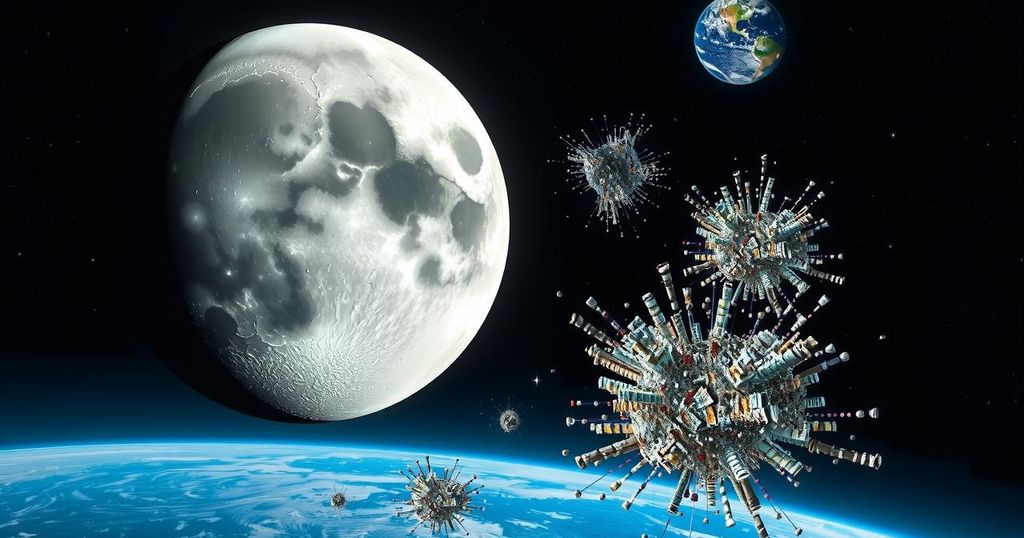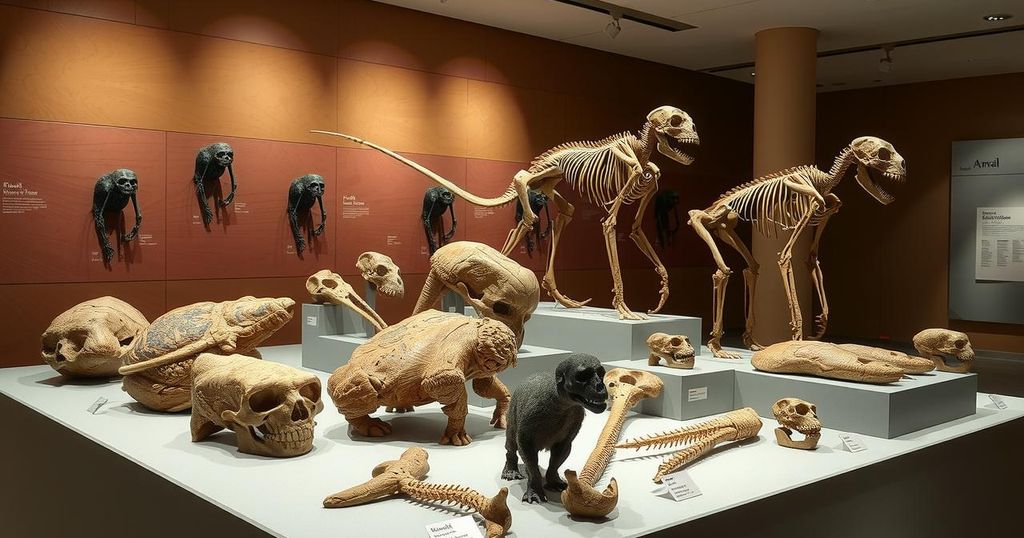Asteroid 2024 YR4 Could Threaten Earth With Satellite-Destroying Debris
Asteroid 2024 YR4 poses a potential threat as it could collide with the moon, resulting in debris that could impair satellites on Earth. Discovered in late 2024, initial fears of an Earth impact have lessened but monitoring continues. Scientists emphasize the importance of preparing for such events, with a chance for clarity in 2028 as observations continue.
An asteroid named 2024 YR4 is drawing attention not just for its past predictions of a potential Earth collision but for a new risk: a possible impact with the moon. Discovered in December of last year, this building-sized space rock was initialized with a scary trajectory aiming straight for Earth, raising alarms that it could hit our planet in 2032. Fortunately, more recent observations indicated that it would likely miss Earth, but the moon could still be in danger.
Currently, astronomers peg the possibility of 2024 YR4 crashing into the moon at about 4.3 percent. Paul Wiegert from the University of Western Ontario has been monitoring the situation closely. He notes, “We were a little bit surprised at the possibility of there being a substantial amount of material at the Earth.” Surprisingly, while the moon may seem like a small target from Earth, its gravity could direct debris back toward our planet under certain conditions.
Wiegert’s team has come up with the staggering idea that an impact from 2024 YR4 could create a one-kilometer-wide crater on the moon. This would mark the most significant lunar impact in roughly 5,000 years. They ran souple simulations—about 10,000 of them—revealing that debris from such an impact might lead to an unexpected torrent of collisions involving Earth’s satellites, happening all at once rather than being spread out over years.
Although the chances are small that these collisions would completely knock out satellites, they could still trigger problematic electronic flashes and other strange anomalies. It’s not easy to determine just how damaging it could be. Wiegert warns that even minor issues could snowball into serious problems because, well, satellites aren’t exactly fixable once they’re up in space.
Mark Burchell from the University of Kent shares his concerns. If the debris were to strike crucial parts of a spacecraft, like coolant pipes or sensors, it could mean losing important functionalities. “You can’t go and fix a satellite. A minor problem is actually a serious problem,” he pointedly remarked.
The findings have raised eyebrows and gotten some folks at space agencies like NASA thinking. There’s a growing conversation about the necessity to not only consider asteroids that threaten Earth but also those that might impact the moon. A spokesperson from NASA’s Planetary Defense Coordination Office hinted at the complexity of addressing 2024 YR4, saying it’s “premature to speculate on potential response options” at this point.
So, what’s the timeline? When 2024 YR4 emerges again in our telescopes come 2028, there will be a chance to tighten up predictions about its path. If the chances of a lunar collision increase, we may have up to four years to make some tough calls on whether we should intervene in some way. The clock is ticking, and space scientists are paying close attention to this celestial rock’s trajectory.
In summary, asteroid 2024 YR4 poses an intriguing risk to both the moon and Earth. While the chances of hitting Earth are low, the possibility of striking the moon could lead to debris showers affecting satellites. With experts analyzing the potential impacts and urging for a proactive approach, the coming years will be critical as scientists await more data in 2028 to determine their next steps. The need for cosmic vigilance has never felt more urgent.
Original Source: www.newscientist.com




Post Comment